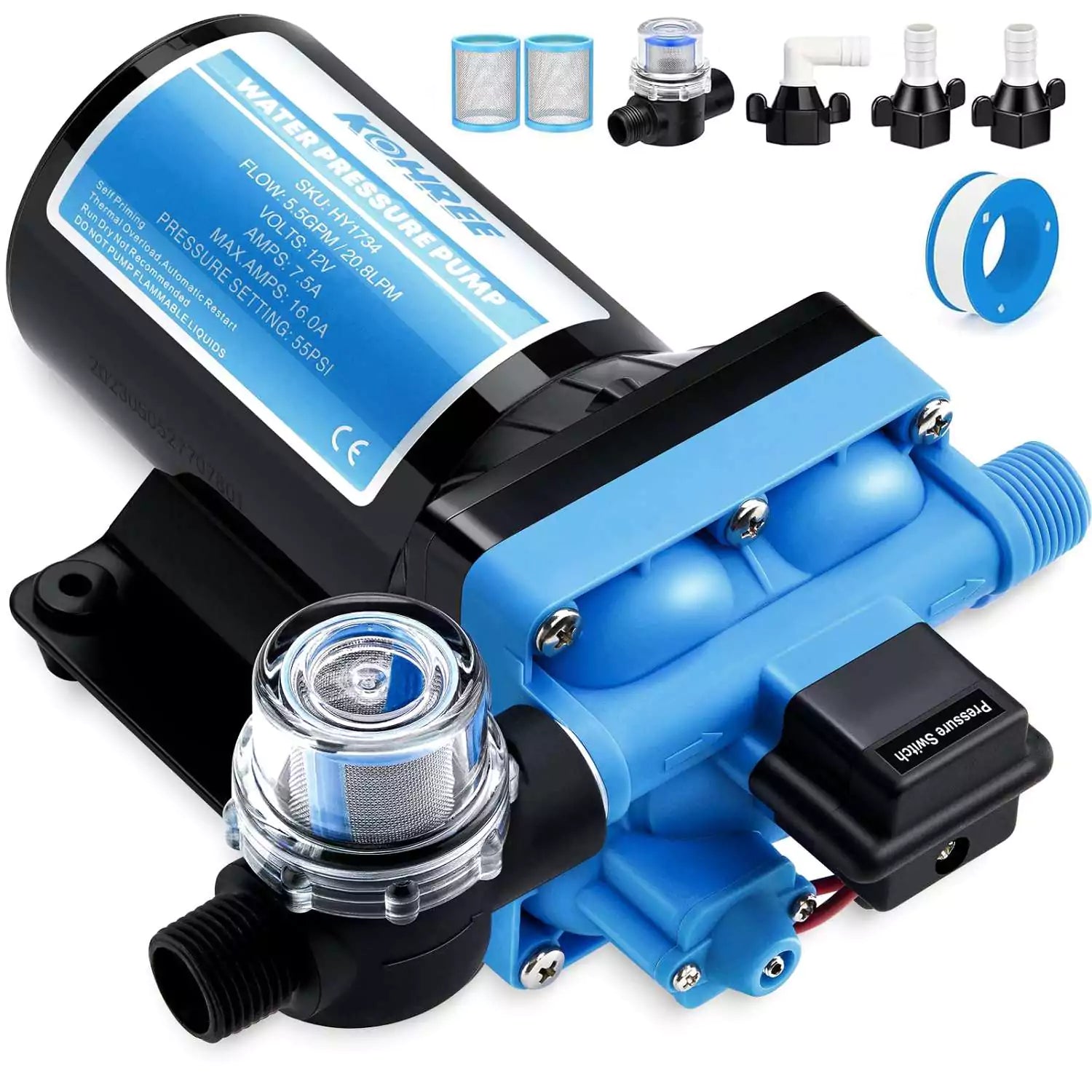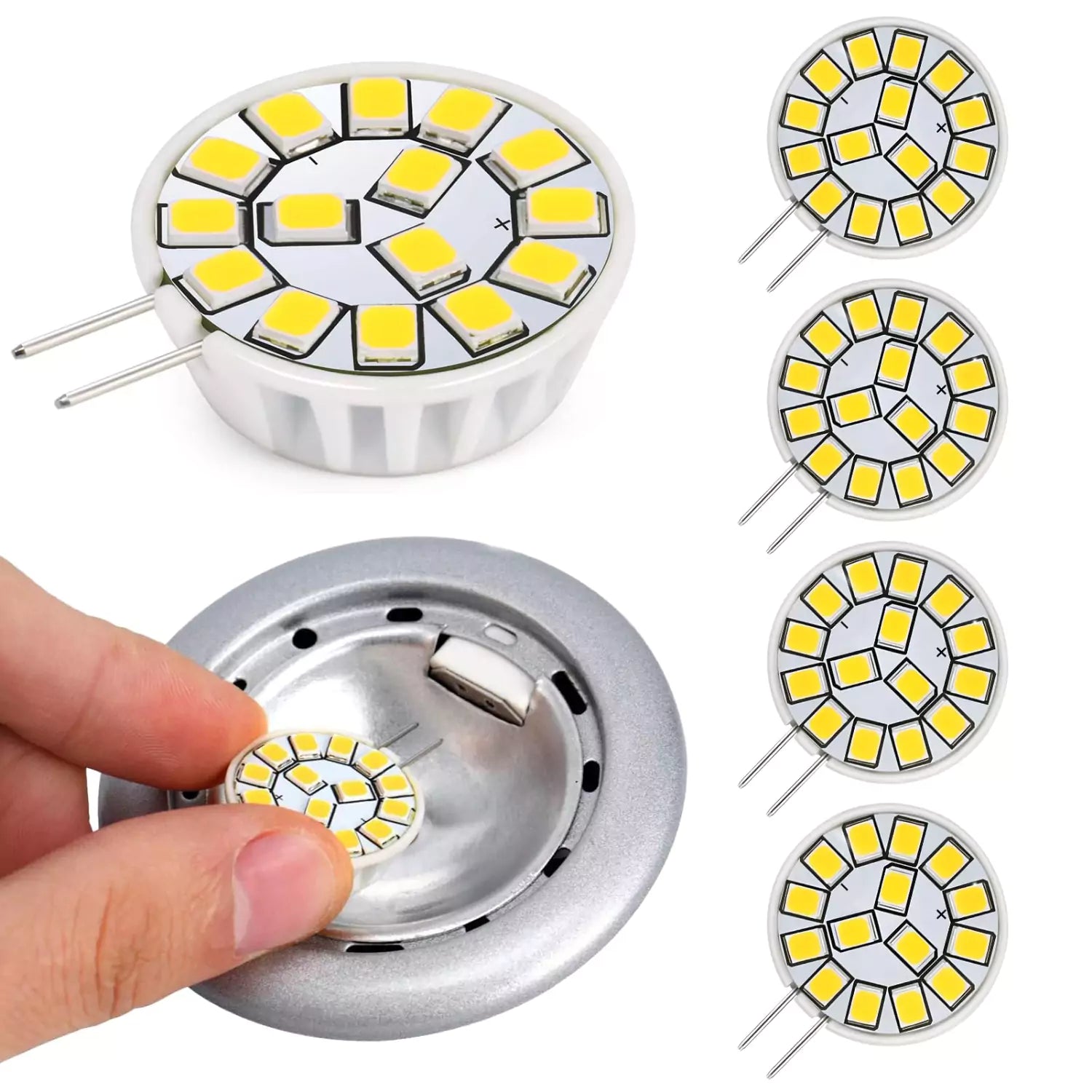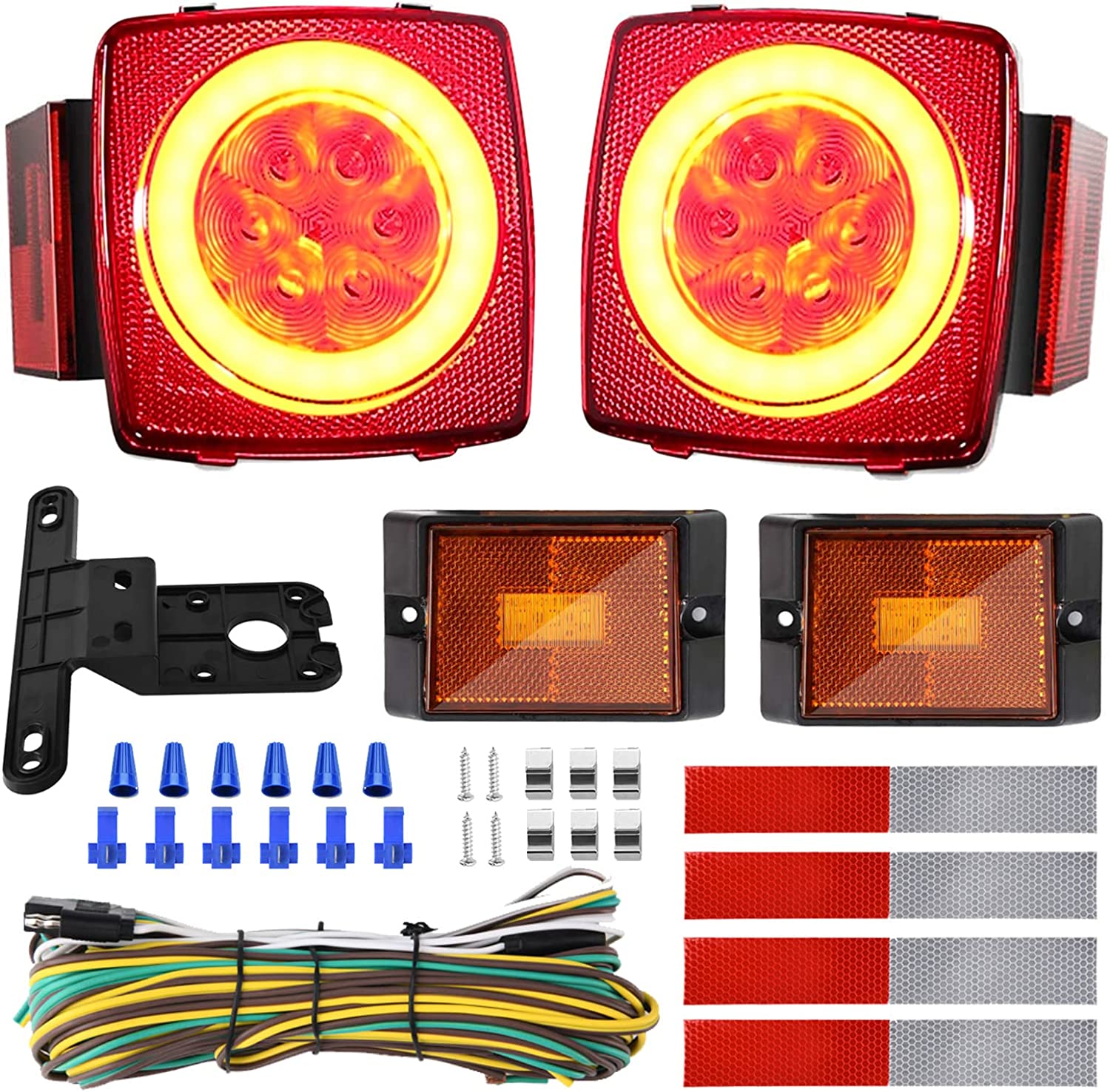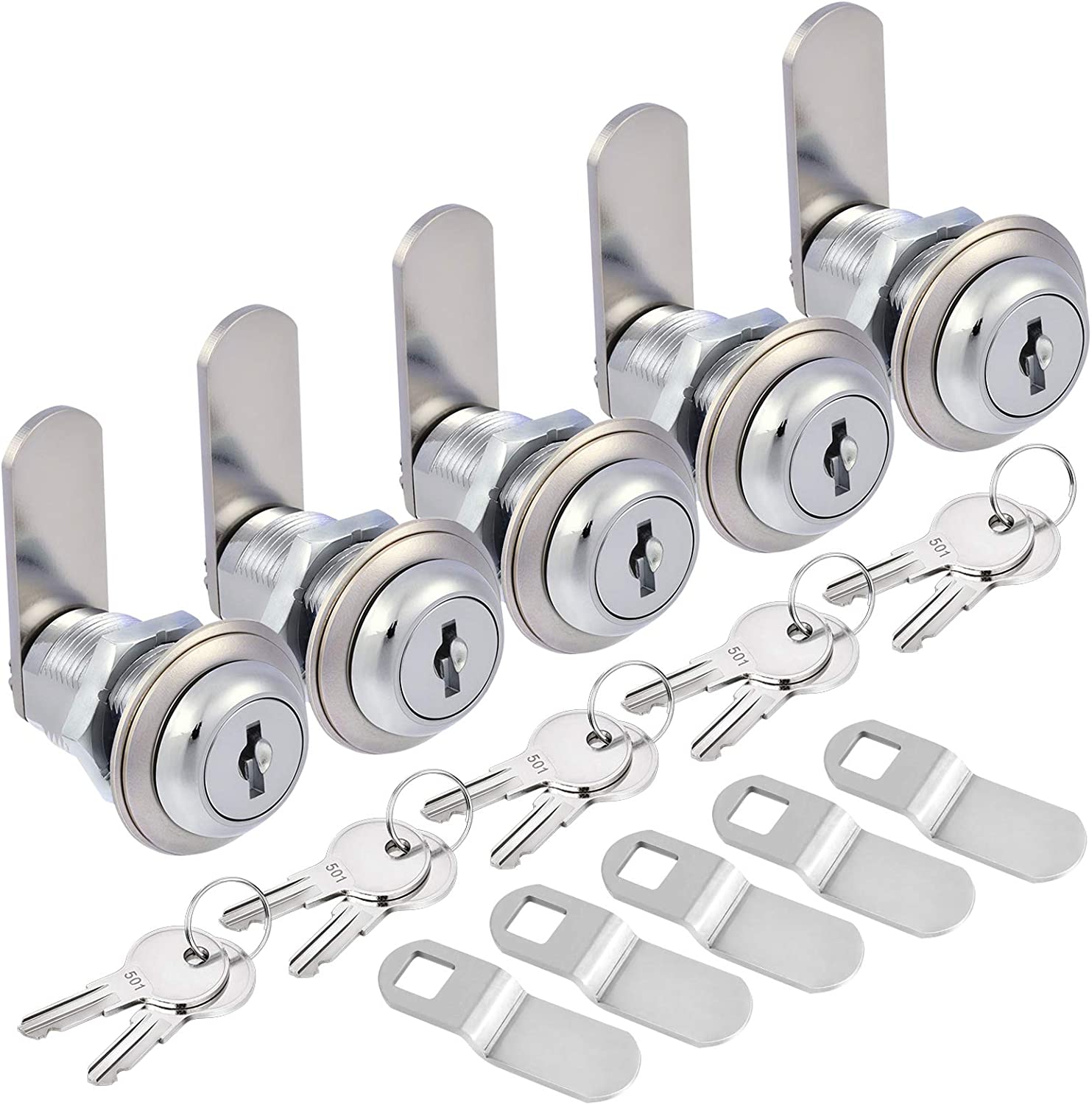Winter can pose significant challenges for RV owners, especially when it comes to preventing your RV's systems from freezing. While protecting your water pump and pipes is common knowledge, it's equally important to safeguard your sewer hose from the cold. A sudden temperature drop can easily cause your sewer hose to freeze, leading to a blockage and unpleasant consequences.
In this article, we'll delve into practical tips and strategies to keep your RV sewer hose from freezing. From preventive measures to emergency solutions, we'll cover everything you need to know to ensure a hassle-free winter camping experience.

What Happens When a Sewer Hose Freezes?
When temperatures drop, the water inside your RV sewer hose can freeze, leading to significant problems. A frozen sewer hose can cause blockages, making it impossible to dispose of wastewater properly.
This not only creates a mess but can also lead to costly repairs if the hose bursts. The expansion of ice can damage the hose material, resulting in leaks or cracks that compromise the entire system.
Moreover, a frozen sewer hose can affect your RV's overall sanitation. If the waste cannot flow freely, it may back up into your RV, creating an unsanitary environment. This situation can lead to health hazards and unpleasant odors, making your camping experience less enjoyable.

How to Know if My RV Sewer Line is Frozen?
Identifying a frozen sewer line early can save you a lot of trouble. There are several signs to look out for.
-
Reduced or No Flow: If you notice that water isn't draining from your sinks or shower as quickly as usual, or worse, not at all, it could indicate a frozen line.
-
Unusual Odors: A blocked sewer line can cause unpleasant smells to back up into your RV. If you notice any new or strong odors, especially around drains, it's time to investigate.
-
Visible Frost or Ice: Sometimes, you can see frost or ice forming on the exterior of your sewer hose. This is a clear indication that the contents inside have frozen.
-
Bulging Hose: If parts of your sewer hose appear swollen or misshapen, it could be due to frozen waste expanding inside.
-
Strange Sounds: Listen for gurgling or bubbling sounds when using water fixtures. These noises can indicate that water is struggling to pass through a partially frozen line.
-
Tank Sensors Acting Up: If your tank sensors suddenly start giving inaccurate readings, it could be due to frozen waste interfering with their function.
I once encountered a situation where my black tank appeared to be full just a day after emptying it. At first, I thought the sensor was malfunctioning, but upon closer inspection, I realized the sewer hose was frozen solid. The lesson? Always trust your instincts and investigate any unusual signs promptly.
By keeping an eye out for these indicators, you can catch a freezing sewer hose early and take action before it becomes a major issue. Remember, prevention is always easier than cure when it comes to RV maintenance, especially in harsh winter conditions.
Preventative Measures to Keep Your Sewer Hose from Freezing
Now that we understand the consequences of a frozen RV sewer hose, let's focus on prevention. Here are some effective strategies to keep your sewer hose from freezing in the first place.
Not to Hook Up at First
To prevent your sewer hose from freezing in the first place, avoid connecting it unless you're fully hooked up. Simply close off your tanks. Once you're ready to empty them, connect the hose, drain the tanks, and then disconnect and store the hose to prevent freezing.
It's worth noting that some RVers hang up their sewer hoses after use. However, if the hose isn't completely dry, water can freeze inside, causing damage. Therefore, it's crucial to fully drain the hose before storing it.

Heat and Insulate your Sewer Hose
It's important to note that you should first inspect the material of your sewer hose. Consider replacing it with a new one and taking steps to heat and insulate it. Most sewer hoses are made of plastic, which can become brittle and crack in cold weather. Upgrading to a vinyl sewer hose is a good option as it's more flexible and weather-resistant.
Additionally, wrapping your sewer hose with pipe insulation is highly recommended. This is essentially like wrapping it in a blanket, helping to maintain a consistent temperature and preventing it from freezing or being covered in ice and snow. Here's how to do it:

Choosing Insulated Material to Cover Sewer Hose
- Select the Right Insulation: Choose a suitable insulated material, such as foam pipe wrap insulation or heat tape covers that are designed to prevent freezing and provide protection.
- Measure the Hose: Measure the length and diameter of your sewer hose to ensure you purchase enough insulation material to cover it completely.
- Cut the Insulation: If using foam pipe insulation, cut it to the appropriate lengths to fit your sewer hose. Ensure the cuts are clean for a snug fit.
- Wrap the Hose: If using foam insulation, simply open the insulation and wrap it around the hose, ensuring it covers the entire length. For specialized covers, slide the cover over the hose.
- Secure the Insulation: Use duct tape, zip ties, or Velcro straps to secure the insulation in place, especially at the ends, to prevent it from slipping off.
- Check for Gaps: Ensure there are no gaps in the insulation that could allow cold air to reach the hose.
- Store Properly: When not in use, store the insulated hose in a dry place to prolong its life.

Utilizing Heating Pads for Sewer Hose
Another excellent preventative measure is using heated pads for RV sewer hose, also called electrically heated sleeve of RV sewer hose. This heated pad can be wrapped around your RV sewer hose to provide warmth during frigid temperatures. Using a combination of insulated hoses and heating elements can create a robust defense against freezing. Here's how to use it:
- Lay out the heated pad along the path where your sewer hose will run.
- Place your sewer hose on top of the pad.
- If possible, use a pipe wrap insulation cover over the hose and pad to retain heat.

Additional Tips
Always follow manufacturer instructions when using electrical heating elements.
Consider using a thermostat control to save energy and prevent overheating.
Regularly check your heating elements for signs of wear or damage.
By implementing these preventative measures, you're giving yourself the best chance of avoiding a frozen RV sewer hose.

Emergency Solutions for Thawing a Frozen Sewer Hose
Despite our best efforts, sometimes the bad weather wins the battle, and we find ourselves with a frozen RV sewer hose. Don't panic! There are several effective methods to thaw your frozen pipes and get things flowing again.
Effective Thawing Techniques for RV Owners
If you suspect your sewer hose is frozen, there are several methods to thaw it safely.
- Use warm water: One effective technique is to use warm water. Pouring warm (not boiling) water over the hose can gradually melt the ice without damaging the material. Be cautious not to use water that's too hot, as this could cause the hose to warp or crack.
- Hair dryer techniques: Another method involves using a hairdryer or heat gun. Set the device to a low setting and carefully apply heat to the frozen section of the hose.
- Heating pad application: If you have an electric heating pad, wrap it around the frozen section of the hose. Secure it with bungee cords or tape, being careful not to create any kinks in the hose.
This method allows for precise control, helping to avoid overheating any specific areas.
Can I Use Hot Water on Frozen Pipes?
Yes, using hot water can be an effective way to unfreeze your RV sewer hose. However, it's essential to remember that you should always use warm water rather than boiling water.
That's because the extreme temperature difference can cause thermal shock, leading to cracks or splits in the hose material.
Hot water may refreeze quickly in cold ambient temperatures, exacerbating the problem.
There's a risk of scalding yourself or damaging nearby components with hot water splashes.
Instead of using hot water directly, consider these safer alternatives:
- Apply hot water bottles or heated gel packs to the frozen areas.
- Use a bucket of warm (not hot) water to gently pour over the hose, allowing for a more gradual temperature change.
- If you must use water, choose lukewarm water and apply it slowly and consistently along the length of the hose.
What to Do if My RV Pipes Freeze Overnight?
Waking up to frozen pipes can be a frustrating start to any RV trip. But don't worry, there are some common solutions to help you quickly thaw out those pipes:
- Locate the Freeze: Try to identify where the freeze has occurred, look for visible signs of ice or frost. Is it just the sewer hose, or are other pipes affected?
- Open Faucets: Open both hot and cold faucets to relieve pressure in the system.
- Apply Heat Safely: Use one of the thawing methods discussed earlier. Start with the section closest to the faucet and work your way down.
- Check for Leaks: Once the pipes have thawed, check carefully for any leaks that may have developed.
- Preventative Measures: Once everything is flowing again, take steps to prevent refreezing, such as adding insulation or a heated sleeve for the RV sewer hose.
By following these steps, we can efficiently address overnight freezing and minimize disruption to our RV adventures.
Emergency Actions for Frozen Pipes
Should You Turn Off Water if Pipes Are Frozen?
This is a question I've heard many times from fellow RV enthusiasts, and the answer is a resounding yes.
Here's why:
- Prevent Further Damage: Turning off the water supply stops more water from entering the system, which could potentially freeze and cause additional pressure on already stressed pipes.
- Minimize Leaks: If a pipe has cracked due to freezing, turning off the water will limit the amount of water that can leak once it thaws.
- Control the Thawing Process: With the water off, you can methodically thaw pipes without worrying about sudden pressure changes.
Here's what to do:
- Locate your RV's main water shut-off valve. It's usually near the freshwater tank or water pump.
- Turn the valve clockwise to shut off the water supply.
- Open all faucets to drain any remaining water from the pipes.
- If you're using city water, disconnect from the external water source.
- Remember to turn the water back on slowly once you've confirmed that all pipes have thawed and there are no leaks.
I learned the importance of this step the hard way during a winter RVing trip. I didn't turn off the water, and when a frozen pipe thawed, it developed a small crack. The result was a soggy carpet and a bad experience.
Can Running Water Help Unfreeze Pipes?
Running water can indeed help unfreeze pipes, but it’s important to do so strategically. If you have a partially frozen pipe, running warm water through the system can help melt the ice. However, avoid running water if the pipe is completely frozen, as this could increase pressure and lead to bursts. Always assess the situation carefully before taking action.
Pros of Running Water:
Moving water is less likely to freeze than standing water. It can help maintain a consistent temperature in the pipes.
Cons of Running Water:
- It's wasteful, especially if you're relying on your freshwater tank.
- It's not effective for pipes that are already frozen solid.
- It can quickly fill up your gray and black water tanks.
In a home plumbing system, letting faucets drip can be an effective preventative measure. However, in an RV, it's generally not recommended as a primary strategy for several reasons:
- Limited Water Supply: Most RVs have a finite water supply, and continuously running water can deplete it quickly.
- Tank Capacity: Your gray and black water tanks have limited capacity. Continuously running water can fill these tanks rapidly, necessitating more frequent dumping.
- Sewer Hose Concerns: A constant trickle of water through your RV sewer hose can increase the risk of freezing, as it creates a thin layer of ice that can build up over time.
Instead of relying on running water, focus on other preventative measures like insulation, heat tape, and heated pads for your RV sewer hose. These methods are more effective and efficient for RV systems.
Remember, while running water might help prevent freezing in some cases, it won't thaw pipes that are already frozen. For that, you'll need to use the thawing methods we discussed earlier.
Keep Your RV Sewer Hose from Freezing
To keep your sewer hose functioning reliably during cold winter months, Kohree RV heated sewer hose cover is ideal for RV enthusiasts who love to travel in cold climates, this heated sleeve protects your waste management system, ensuring smooth operations year-round. You can focus on enjoying your trips without worrying about frozen pipes.

Freeze-Proof Protection for RV Sewer Hoses: Our heated RV sewer hose sleeve is engineered to prevent freezing, making it ideal for winter camping. Equipped with a smart self-regulating internal thermostat, it can protect against freezing temperatures as low as -45°F. This is the perfect solution for those who need to dump their RV waste during the winter months.

External Thermostat Control & Overheating Protection: Our heated sewer hose cover is equipped with an external thermostat set between 41°F and 59°F (5°C and 15°C). When the ambient temperature drops below 41°F, the heating pad automatically activates to prevent freezing. Conversely, when the temperature rises above 59°F, the heating pad shuts off to conserve energy.

Durable Waterproof Cover: Constructed from high-quality materials, our heated sewage hose cover for the camper is waterproof, ensuring reliable performance even in unexpected rain showers.

Versatile Applications: Beyond RV camping, our heated sewer hose cover can be used in homes, farms, and gardens to address water drainage issues during extreme winter conditions.
We offer 15ft and 20ft options for you to adapt to different RV sewer hoses, order the electrically heated sleeve for RV sewer hose now to avoid freezing problems!
Tips for Winter Camping with Your RV
To truly enjoy the beauty of winter landscapes without the worry of frozen sewer hoses, it's essential to approach cold-weather camping with careful planning and preparation.
Planning Your Trips Around Weather Conditions
Smart trip planning is crucial for successful winter RV adventures:
- Monitor Long-term Forecasts: Keep an eye on extended weather predictions for your intended destinations. Pay particular attention to overnight lows, as these are when your RV water tank and sewage hose are most likely to freeze.
- Choose Routes Wisely: Plan your travel to avoid areas prone to severe winter weather when possible. Check for road closures, chain requirements, and other winter travel restrictions along your route.
- Be Flexible: Build flexibility into your itinerary to accommodate unexpected weather changes. If possible, try to schedule your trips during milder periods. A few degrees can make a significant difference in preventing frozen pipes.
- Understand Elevation Changes: Remember that higher elevations often mean colder temperatures and more challenging conditions.
- Plan for Shorter Travel Days: Winter driving can be more demanding, so allow extra time between destinations.
- Sun Exposure: If possible, try to park your RV where it will receive maximum sun exposure during the day. This natural heat can help prevent freezing.
By carefully considering weather patterns and road conditions, we can minimize the risk of encountering severe colds that could jeopardize our RV systems.
Finding Campgrounds with Winter Amenities
- Heated Water Connections: Some RV parks offer heated spigots, which can be a game-changer in preventing your water intake from freezing.
- Electrical Hookups: Ensure the campground can provide enough amperage to run your heating systems, including any RV sewer hose heated pads you might be using.
- Dump Station Accessibility: Check that the dump station remains open and accessible during winter months. Some campgrounds may close certain facilities during the off-season.
- Windbreaks or sheltered sites: Look for campgrounds that offer natural or artificial windbreaks to help protect your RV from harsh winter winds.
- On-site propane refill services: This can be crucial for maintaining your RV's heating system during extended cold-weather stays.
Using Thermometers to Keep Track of Temperature
I always keep a digital thermometer with a remote sensor near my RV sewer hose connection. Place thermometers in various locations – inside your RV, in storage bays, and near your water and sewer connections. It can alert you to dangerous temperature drops before any freezing occurs.
By following these tips and staying vigilant, you can enjoy the beauty of winter camping while minimizing the risk of plumbing issues. Remember, preparation and awareness are key to keeping your RV sewer hose and other systems functioning smoothly in cold weather.
Conclusion
Keeping your RV sewer hose from freezing is essential for a smooth and enjoyable winter camping experience. By understanding the risks, implementing preventative measures, and being prepared with emergency solutions, we can enjoy the beauty of cold-weather RV adventures without the worry of frozen pipes.











































